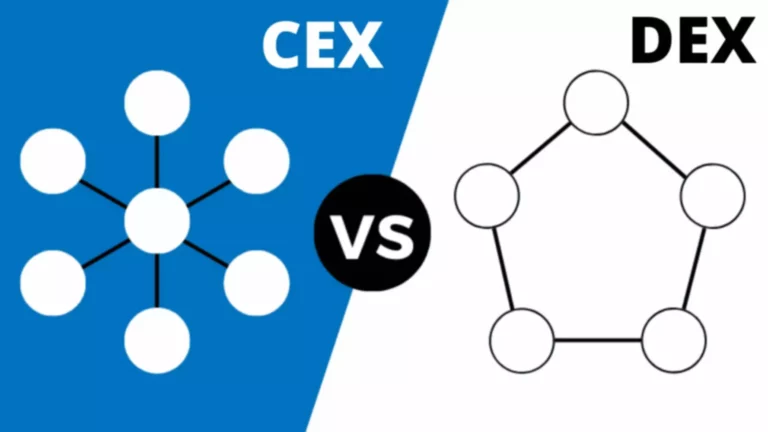We offer an extensive library of learning materials, including interactive flashcards, comprehensive textbook solutions, and detailed explanations. The cutting-edge technology and tools we provide help students create their own learning materials. StudySmarter’s content is not only expert-verified but also regularly updated to ensure accuracy and relevance. If the yellow precipitate of triiodomethane is formed, the test is positive and confirms the presence of the CH3CH(OH)- group in the initial alcohol.
Discover the structure, types, and function of alcohols
Ethanol, isopropanol, 2-butanol, and tert-butanol are produced by this general method. The direct method avoids the formation of stable intermediates, typically using acid catalysts. In the indirect method, the alkene is converted to the sulfate ester, which is subsequently hydrolyzed. The direct hydration uses ethylene (ethylene hydration)33 or other alkenes from cracking of fractions of distilled crude oil. Many alcohols are produced by hydroxylation, i.e., the installation of a hydroxy group using oxygen or a related oxidant. Hydroxylation is the means by which the body processes many poisons, converting lipophilic compounds into hydrophilic derivatives that are more readily excreted.
Tertiary alcohols are eliminated easily at just above room temperature, but primary alcohols require a higher temperature. Primary alkyl halides react with aqueous NaOH or KOH to give alcohols in nucleophilic aliphatic substitution. Secondary and especially tertiary alkyl halides will give the elimination (alkene) product instead. Grignard reagents react with carbonyl groups to give secondary and tertiary alcohols. Related reactions are the Barbier reaction and the Nozaki–Hiyama–Kishi reaction. Simple alcohols like methanol, ethanol, and propanol occur in modest quantities in nature, and are industrially synthesized in large quantities for use as chemical precursors, fuels, and solvents.
The IUPAC names of molecules where the hydroxyl group has the highest priority contain the -ol suffix. If the hydroxyl group isn’t the highest priority, the chemical name usually has a hydroxy- prefix. Sugars are examples of molecules that contain hydroxyl groups, but aren’t named using the hydroxy- prefix or -ol suffix. Octyl Alcohol, also known as 1-Octanol, is a fatty alcohol with a chemical formula C8H18O. It is a colorless, oily liquid with a mild, sharp odor reminiscent of the smell of alcohol. Octyl Alcohol is typically used as a solvent, flavoring agent, and in the manufacturing of plastics and other industrial products.
Long-Term Effects of Drinking Alcohol
Additionally, alcohol irritates the digestive system, causing gastritis, acid reflux, ulcers, and pancreatitis, all of which impair digestion and nutrient absorption. Alcohol is metabolized in the body through a complex biochemical process primarily occurring in the liver, which is responsible for breaking down and eliminating ethanol to prevent toxic accumulation. Alcohol is addictive due to its ability to affect the brain’s reward system, causing cravings and dependence. According to the NIAAA, 14.5 million Americans aged 12 and older struggled with Alcohol Use Disorder in 2019, highlighting the widespread issue of alcohol dependence.
Reactions
The primary sources of the alcohols include both natural and synthetic pathways. Natural sources consist of fermentation processes where yeasts convert sugars into ethanol, commonly utilized in alcoholic beverages. Other natural alcohols, like glycerol, are produced from fats and oils during saponification. The classification into primary, secondary, and tertiary categories is essential because it affects the chemical behavior of the alcohols. For instance, primary alcohols are generally more reactive than tertiary alcohols in oxidation reactions, leading to different products. The risks of drinking too much alcohol are liver disease, cardiovascular problems, neurological impairment, and increased cancer risk.
We adhere to strict accuracy guidelines and only reference credible sources when providing information on our website. It takes approximately 5 to 7 days to detox from alcohol, with withdrawal symptoms beginning within 6 hours after the last drink and peaking at around 72 hours. The different uses of alcohol are recreational, medicinal, and industrial. In the United States, alcohol consumption remains a significant public health concern.
- Due to oxygen being more electronegative than hydrogen, the shared pair of electrons shifts towards oxygen, making the -OH bond weaker and easier to break.
- Alcohol is produced naturally when yeasts ferment sugars to generate energy, and some animals that eat a lot of fruit or nectar have evolved to metabolise it.
- Whether through their historical roots or contemporary applications, understanding alcohol prompts both appreciation and caution in how we engage with these extraordinary substances.
- Alcohol vapor on passing over copper gauze at 3000C give different dehydrogenation products.
- According to the Brønsted-Lowry theory of acids and bases, all molecules which donate protons (H+) are acids.
fermentation
- In most cells the enzymes occur in the soluble portion of the cytoplasm.
- His focus is on helping people who suffer from multiple issues, such as schizophrenia, mood disorders, substance abuse, PTSD, anxiety, depression, OCD, and ADHD.
- The chemistry of alcohol is relatively straightforward yet fascinating.
- This is why alcohol is loved by so many and plays such a major role in our lives.
- In the Barton–McCombie deoxygenation an alcohol is deoxygenated to an alkane with tributyltin hydride or a trimethylborane-water complex in a radical substitution reaction.
Essentially, an alcohol can be viewed as a modified version of hydrocarbons, where the hydrogen atom bonded to a carbon is replaced with a hydroxyl group. The resulting compounds exhibit distinct physical and chemical properties that influence their utilization in various sectors, making the alcohols a vital area of study in organic chemistry. It’s important to note that guidelines for moderate drinking vary based on individual health considerations, cultural norms, and specific health recommendations.
The term “octyl” is derived from “octo-”, which is a Latin prefix meaning “eight”, referring to the eight carbon atoms in the molecule. The suffix “alcohol” comes from the Arabic word “al-kuḥl,” which means any powdered substance and later came to mean distilled substances in general, narrowing down to ethanol and similar compounds in modern times. This type of alcohol is a drug and is produced by fermentation of grains, fruits or other types of sugar. Ethanol is different from Rubbing alcohol (formally known as isopropyl alcohol) which should not be ingested by humans and serves as a sanitizing agent. The alcohols represent a critical category of organic compounds with diverse and significant applications across various industries.
Acidity
The individual involved, the amount of alcohol consumed and the social context all play a role in determining what effects it can have. Historically, alcohol has been used in association with social activities, including both religious and non-religious rituals, as a dietary component, and as a medicinal agent. Although it was once used for therapeutic purposes, it is no longer recommended as a therapeutic because of its ability to produce intoxication.
Prolonged alcohol exposure disrupts neurotransmitter function, leading to depression, anxiety, and alcohol dependence, making it harder for individuals to quit drinking. This tolerance leads individuals to consume higher amounts to achieve the same effects, increasing the likelihood of dependence and addiction. In conclusion, alcoholic beverages encompass a wide range of drinks that have been created through fermentation and, in some cases, distillation. From beer to wine and spirits, each type of alcoholic beverage has its own characteristics and effects on the body. Understanding what defines alcohol and how it's produced opens up a greater appreciation for both the art and the science behind these drinks.

Ethanol (grain alcohol) and methanol (wood alcohol) are the best-known alcohols with one hydroxyl group. Glycols (e.g., ethylene glycol, or antifreeze) contain two hydroxyl groups, glycerol three, and polyols three or more. The effects of drinking alcohol are short-term impairment, long-term health risks, and increased susceptibility to addiction. In the short term, alcohol consumption leads to euphoria, relaxation, and lowered inhibitions, but excessive intake causes impaired judgment, coordination loss, nausea, and blackouts. Alcohol is a psychoactive drug that has been consumed in drinks for most of human history.
A substantial amount of energy is needed to overcome these strong attractive forces, resulting in a higher boiling point. Hydrocarbons, alcohol definition, formula, and facts being nonpolar, only exhibit weak van der Waals forces, which are much easier to break. The solubility of alcohol in water is determined by the hydroxyl group.




